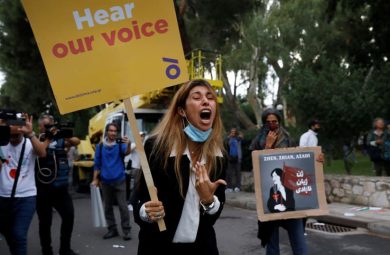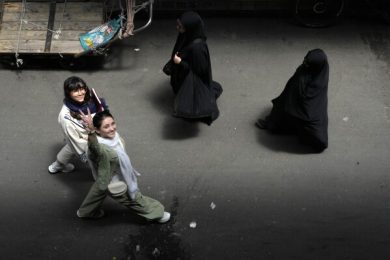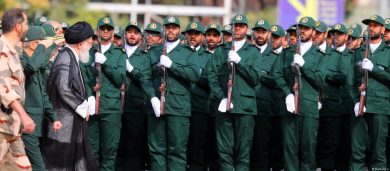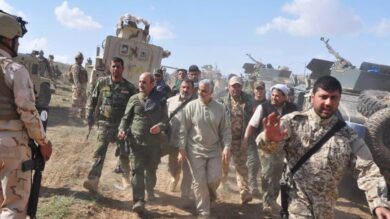Art in Iran has long been a tool of expression, but under the shadow of the Islamic Revolutionary Guard Corps (IRGC), it has become a bold and defiant weapon. As censorship tightens and oppression grows, Iranian artists have transformed their creativity into resistance — giving voice to the silenced, remembering the fallen, and inspiring revolution.
1. The IRGC and Cultural Suppression
The IRGC, beyond its military and economic control, aggressively monitors and censors cultural production. Its tactics include:
• Banning exhibitions and performances deemed “anti-Islamic” or “anti-revolutionary.”
• Imprisoning or exiling artists who challenge state narratives.
• Enforcing gender segregation and hijab laws in art spaces.
• Manipulating state-run media and art institutions.
This repression has created a cultural underground — a movement where art becomes protest.
2. Visual Art: Portraits of Protest
From graffiti to paintings, Iranian artists illustrate resistance:
• Murals of Mahsa Amini and other victims of state violence have appeared across cities — often removed by the regime but documented and shared online.
• Exiled artists use canvases to depict prison life, women’s struggles, and executions.
• International exhibitions now feature banned Iranian artworks, turning global attention toward IRGC oppression.
3. Music: The Sound of Defiance
Music, especially underground and female-led performances, is criminalized by the regime. Yet:
• Female vocalists post songs anonymously online, challenging the IRGC’s ban on women singing solo.
• Songs like “Baraye” by Shervin Hajipour became anthems of the revolution — so powerful that the artist was arrested.
• Hip-hop and rap emerge as tools for youth to criticize injustice, inequality, and corruption.
4. Literature and Poetry: Words Against the Regime
Iran has a rich literary heritage, now weaponized through:
• Poetry mourning slain protesters and political prisoners.
• Novels and memoirs documenting trauma under the IRGC.
• Social media poetry that spreads like wildfire despite censorship.
Writers are often jailed under charges like “propaganda against the state,” yet they persist.
5. Theater and Film: Staging Rebellion
The Iranian theater and film scene faces heavy IRGC scrutiny. Still:
• Films like Jafar Panahi’s — often banned in Iran — win international awards and highlight regime repression.
• Underground theater explores taboo topics: women’s rights, executions, LGBTQ+ issues.
• Mobile performances and street art redefine storytelling under surveillance.
6. Digital Art and Social Media: Resistance Goes Global
With traditional spaces closed off, digital platforms become Iran’s new art galleries:
• Digital artists create viral content — animations, posters, and infographics — to mobilize protests.
• Augmented reality art pieces show scenes of torture, protest, and hope.
• Anonymous collectives of artists amplify messages globally, bypassing IRGC firewalls.
7. Women Leading the Artistic Resistance
Women are central to Iran’s art uprising:
• From Masih Alinejad’s activism to anonymous female photographers, their lens captures truth under hijab laws.
• Artistic acts like removing hijabs or dancing in public are both symbolic and performative resistance.
• Despite arrests, fines, and harassment, women persist in turning their lives into living art.
8. Art in Exile: Diaspora Support and Influence
Artists in exile fuel the movement:
• They hold exhibitions, raise funds, and tell stories that the IRGC tries to erase.
• Global artists and celebrities now collaborate with Iranian creatives, creating solidarity.
• Diaspora art acts as an echo chamber — keeping global attention on Iran’s freedom movement.
9. Why Art Matters in the Fight for Freedom
• Art humanizes statistics. It turns news into emotion.
• Art bypasses censorship — it doesn’t need translation.
• Art gives power to the powerless, voice to the voiceless.
The IRGC fears art because it inspires unity, vision, and courage.
Conclusion: From Oppression to Expression
Despite crackdowns, surveillance, and fear, art in Iran is alive — louder, bolder, and more powerful than ever. In brushes, words, and melodies, Iranians reclaim their identity and future. As long as art exists, oppression will never win.
Join Our Newsletter!
Stay informed with the latest updates, news, and ways to take action in the fight for justice and global security. Sign up now to get updates delivered straight to your inbox!





